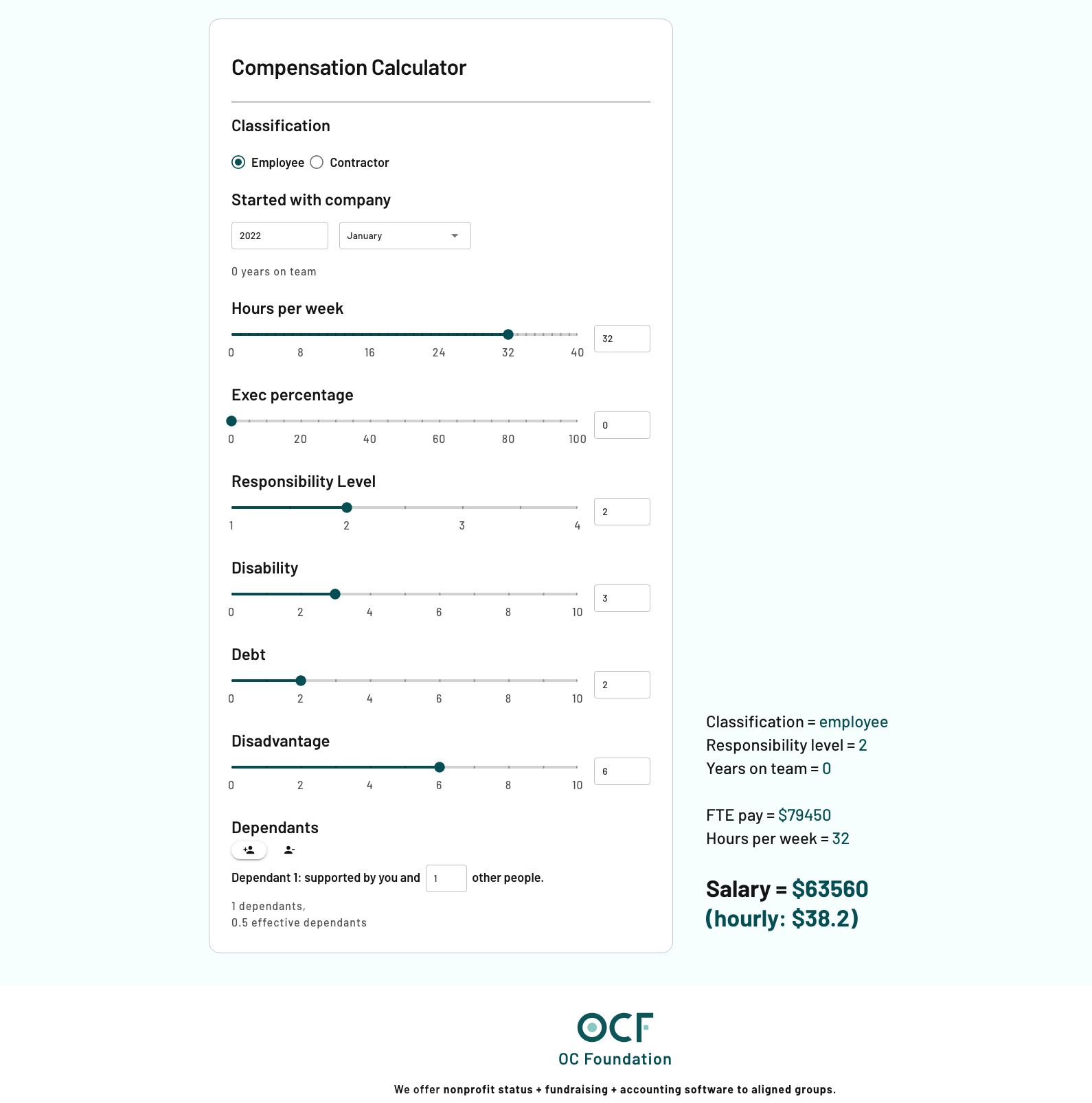Collaborative employee pay-setting by Open Collective

-
Global, Open Collective Foundation, Online
- Where did this use case occur?
-
Mid-2022 - ongoing
- When did this use case occur?
-
Greaterthan [1], The Sustainable Economies Law Center [2]
- Who were some of the key collaborators
-
9 employees
- How many people participated?
-
Worker's Rights
- What are some keywords?
What was the problem?
Most organizations, whether they are for-profit or nonprofit entities, are dominated by hierarchies and power is centralized in the hands of a few executives and managers. This has led to the evolution of economic systems that incentivize perpetual growth, wealth concentration, and the exploitation of land and people. A better society can be formed by cultivating organizations that value solidarity among peers, transparency, and participatory processes that give workers agency to self-direct and guide the mission and outcomes of the organizations they are part of.
How does the community approach the problem?
The Open Collective Foundation, with support from Greaterthan, went through a participatory process with members of their organization to develop their own compensation calculation methodology. A Compensation Working Group was established with 3 rotating members to manage the process as a whole, attain feedback, and facilitate iterations of the model. During the workshop with Greaterthan, various group and individual exercises were conducted to inform the generation of the compensation model. The final output was a combined model which incorporated a formula (for establishing a baseline salary), a self-set process based on personal factors (which remains private information), and collectively-set factors (determined in dialog with the team).
What were the results?
• Open Collective initiated a Loomio proposal to implement the new model as a 3-month trial period, which passed unanimously.
• “It balances paying people based on value provided to the organization, skills and seniority level, supporting people with higher financial needs, and addressing social equity to an extent.” [3]
• “The lowest pay band is 150% of the living wage for high CoL states… The difference between the highest and lowest pay is 1.5x base, 1.75x with the ED pay included, and with other factors maxes out around 2x—a fair differential without huge inequality.” [4]
• “Every member of our team has a high degree of autonomy, and I think our compensation system now recognizes the special value each of us brings.” [5]
How participatory was it?
Empower
This process demonstrates a workplace's efforts to give employees almost complete power over their own compensation with checks coming horizontally from peers rather than a top-down hierarchical structure.
What makes this Use Case unique?
'I like how this use case features a horizontal and participatory governance process in a workplace, a domain usually thought of as quite hierarchical. I also like how the solution itself is a hybrid model combining pre-determined pay windows, employee self-decision-making, and also peer collaboration.' -Val